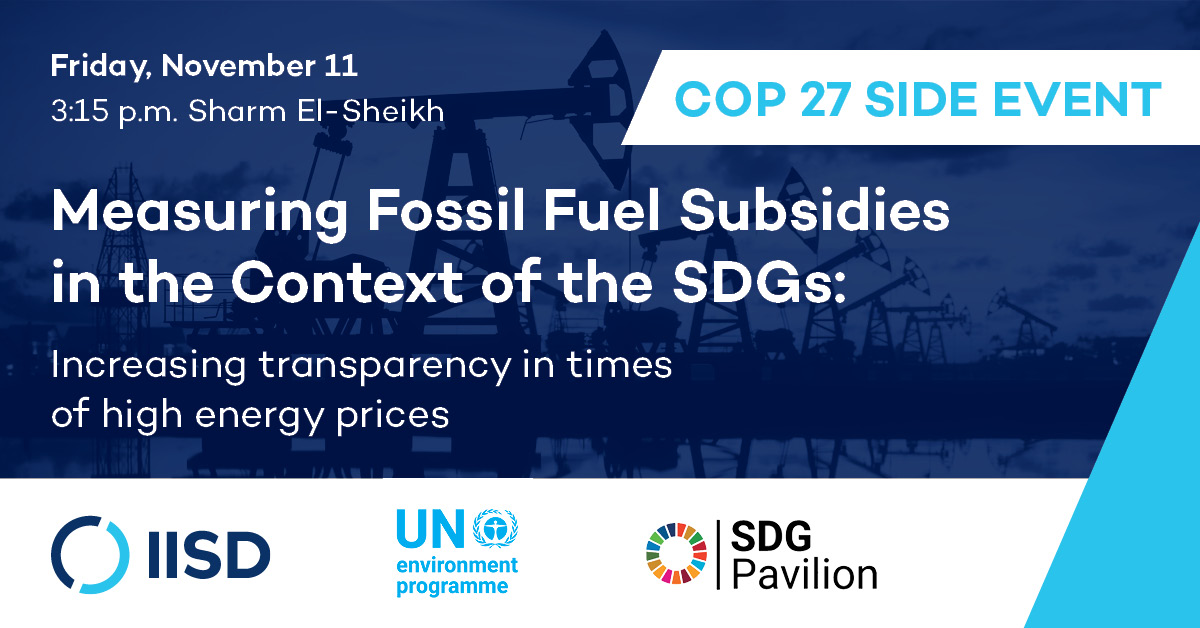COP 27 Side Event | Measuring Fossil Fuel Subsidies in the Context of the SDGs: Increasing transparency in times of high energy prices

Fossil fuel subsidies have many negative economic, social, and environmental consequences. Under Sustainable Development Goal (SDG) 12, United Nations member states committed to rationalizing inefficient fossil fuel subsidies. To measure progress on this target, SDG indicator 12.c.1 tracks the global size of fossil fuel subsidies, primarily using data provided by international organizations. Despite being classified as a Tier I indicator, the data reported varies in terms of depth and scope depending on the country.
To improve the quality of the data and better inform policy making, SDG 12.c.1 aims to make this data collection process more country driven, with governments taking full ownership. The United Nations Environment Programme (UNEP), the custodian agency of this indicator; the Organisation for Economic Co-operation and Development (OECD); and the International Institute for Sustainable Development (IISD) have therefore collaborated in developing a methodology to provide governments with guidance and build capacity through various regional workshops. However, few UN member states have submitted data so far.
This session, organized by IISD with support from UNEP, aims to raise awareness about how this indicator can help increase transparency about fossil fuel subsidies. This comes at a critical moment when many governments are adopting new subsidies to shield their populations and economies from current high energy prices or ensure a stable energy supply, which is becoming a large drain on their budgets.
The session will also highlight the latest available global fossil fuel subsidy data and invite governments from both the Global North and South to present their approaches to measuring their fossil fuel subsidies to allow the sharing of good practices.
